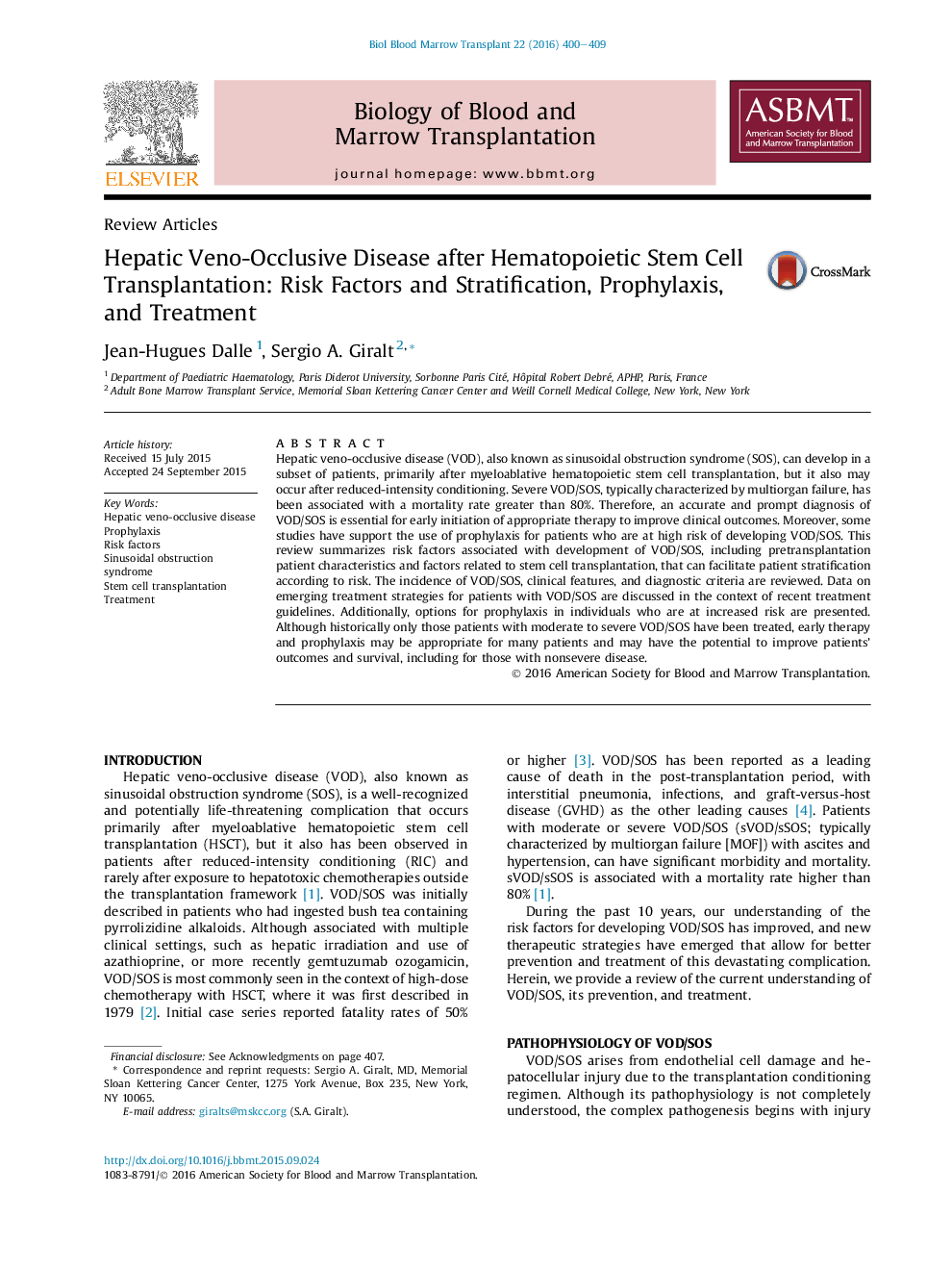| کد مقاله | کد نشریه | سال انتشار | مقاله انگلیسی | نسخه تمام متن |
|---|---|---|---|---|
| 2101789 | 1546256 | 2016 | 10 صفحه PDF | دانلود رایگان |
• Veno-occlusive disease/sinusoidal obstruction syndrome can occur after stem cell transplantation.
• Veno-occlusive disease/sinusoidal obstruction syndrome, particularly severe veno-occlusive disease/sinusoidal obstruction syndrome, causes significant morbidity and mortality.
• Key pretransplantation and transplantation-related risk factors permit patient stratification.
• Treatment and prophylaxis strategies should be tailored to patient risk factors.
• Early treatment is recommended for patients at risk for moderate to severe veno-occlusive disease/sinusoidal obstruction syndrome.
Hepatic veno-occlusive disease (VOD), also known as sinusoidal obstruction syndrome (SOS), can develop in a subset of patients, primarily after myeloablative hematopoietic stem cell transplantation, but it also may occur after reduced-intensity conditioning. Severe VOD/SOS, typically characterized by multiorgan failure, has been associated with a mortality rate greater than 80%. Therefore, an accurate and prompt diagnosis of VOD/SOS is essential for early initiation of appropriate therapy to improve clinical outcomes. Moreover, some studies have support the use of prophylaxis for patients who are at high risk of developing VOD/SOS. This review summarizes risk factors associated with development of VOD/SOS, including pretransplantation patient characteristics and factors related to stem cell transplantation, that can facilitate patient stratification according to risk. The incidence of VOD/SOS, clinical features, and diagnostic criteria are reviewed. Data on emerging treatment strategies for patients with VOD/SOS are discussed in the context of recent treatment guidelines. Additionally, options for prophylaxis in individuals who are at increased risk are presented. Although historically only those patients with moderate to severe VOD/SOS have been treated, early therapy and prophylaxis may be appropriate for many patients and may have the potential to improve patients' outcomes and survival, including for those with nonsevere disease.
Journal: - Volume 22, Issue 3, March 2016, Pages 400–409
